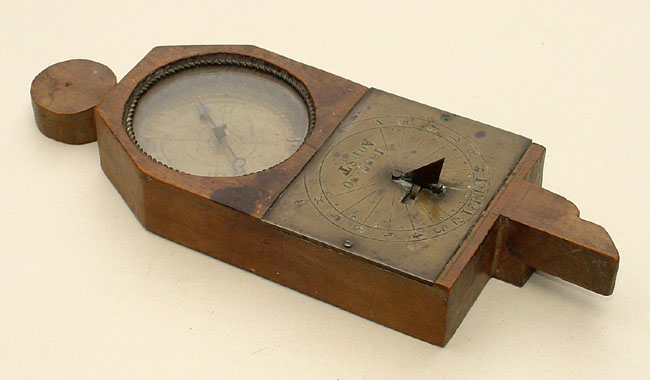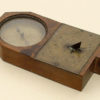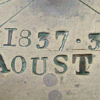Description
UNUSUAL PORTABLE COMPASS / SUNDIAL, French, 1837, stamped “1837 . 30 Aoust” on the brass. This traveler’s instrument is carved from a single block of dense wood (walnut?) 9-1/4″ (23 cm) long, with knob handle and shaped alignment index. It has an inset glazed compass with finely shaped arrow-head needle and with brass compass plate divided every five degrees and offset for 27° west declination. The adjacent horizontal sundial has brass base plate divided every 30 minutes, and small folding gnomon. Condition is fine, with a “folk art” quality.
We have not seen another compass / sundial instrument of this particular form. It is clearly French, with the early spelling of “August,” and the directions E and O (for Est and Ouest). The extreme western declination (the difference in compass direction between magnetic north and “true” geographic north) of 27° was in fact never realized. About 1580, the declination had an extreme eastern value of approximately 12° (in London and Paris); it then moved westward for 230 years, reaching a peak of 23° west c. 1810, before heading back east. But some dial makers apparently extrapolated the long and rather linear increase, to arrive at values which were never reached (and see Tesseract Catalogue 76 item 20 for an English dial with 27° west declination).
Ask the Dealer
Dealer information
 TESSERACT
TESSERACT
David and Yola Coffeen both have enjoyed academic careers, as planetary astronomer and as linguist/educator. But since 1982 (yes, 1982!) they have been full-time dealers in early scientific and medical instruments, under the name Tesseract. Selling primarily by catalogue (over 100 issued so far) they also have a web presence at www.etesseract.com, and can be contacted at [email protected].










